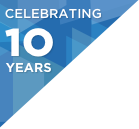Presentation: Building Trust Machines using the Block Chain
Location:
- Mountbatten, 6th flr.
Duration
Day of week:
- Wednesday
Key Takeaways
- Understand the key capabilities of blockchain technology.
- Learn the wide applicability of blockchains and demonstrate use cases beyond finance.
- Understand how to experiment with blockchain development tools and integrate blockchain technologies in your application..
Abstract
We reap massive benefits from working together. But since the early days of our societies, trust boundaries between individuals, businesses, institutions and governments prevent us from collaborating and dealing freely with each other. In order for such economic actors to engage in economic activity with each other, they must cross these trust boundaries – invisible boundaries stemming from the risk that interests of actors that do not otherwise know each other are not aligned which are often prohibitively expensive to cross.
The blockchain can be seen as the core of a trust machine that people can use cheaply to replace the human and labor intensive processes we have employed so far in order to overcome trust boundaries.
In this talk we will discuss how and why blockchain works so well and show how it can be generalised well beyond its existing well known domains like payments, to allow many new and exciting types of distributed collaboration.
Interview
Similar Talks
Tracks
Covering innovative topics
Monday, 7 March
-
Back to Java
What to expect in Java 9 and Spring 5
-
Stream Processing @ Scale
Big data, fast-moving data. Practical implementation lessons on Real-time Data
-
DevOps & CI/CD
Lessons/stories on optimizing the deployment pipeline
-
Head-to-Tail Functional Languages
Free-range Monads, Tackling immutability, tales from production, and more...
-
Architecting for Failure
Your system will fail. Take control before it takes you with it
-
21st Century Culture from Geeks on the Ground
New ways to organise technology companies and workplace culture
Tuesday, 8 March
-
Architectures You've Always Wondered about
In-depth technical case studies from giants like: Microsoft, Netflix, Google, Twitter, and more...
-
Close to the Metal
Get efficiency back into your code, concepts like: cache efficient algorithm and lock free data structures
-
Containers (in production)
Real-world lessons on scalability and reliability in production container deployments
-
Modern CS in the real world
Real-world Industry adoption of modern CS ideas
-
Security, Incident Response & Fraud Detection
Master-level classes on building security into your system and responding to incidents when things go wrong.
-
Optimizing You
Keeping life in balance is always a challenge. Learning lifehacks
Wednesday, 9 March
-
Disrupting Finance
Technology advances in finance (blockchain, P2P, Machine Learning, API's)
-
Modern Native Languages
Modern native languages: Safe efficiency with Go, Rust, Swift
-
Full Stack Javascript
Level up Javascript with topics like Angular, React/ReactNative, Node, Mongo/Couch/Other, Falcor, GraphQL, etc
-
Data Science & Machine Learning Methods
A developer's data science and machine learning toolkit
-
Microservices for Mega-Architectures
Practical lessons on Microservices success.
-
Modern Agile Development
Revisiting Agile today and tackling challenges we are seeing in the wild




